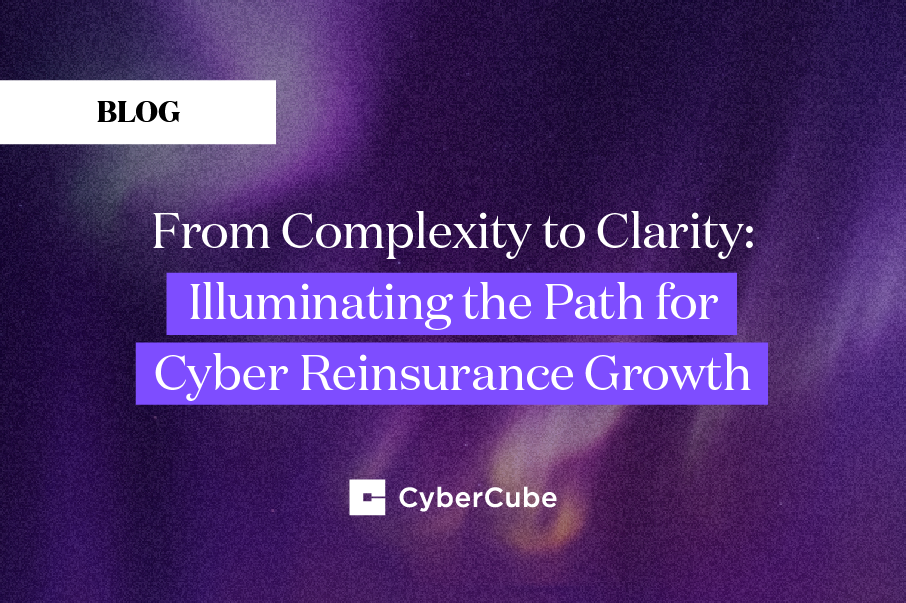For cyber (re)insurers, it’s critical to establish your own view of risk across your books of business. Managing your portfolio can be difficult in today's market, which is why you must have verified data from reliable sources and the ability to see where your risk lies.
That’s where CyberCube’s Portfolio Manager comes in. It provides the analysis breadth, customizability, and detailed reporting you need to truly own your cyber risk, while simultaneously streamlining communication with all or your stakeholders.
Let’s take a closer look at how Portfolio Manager can help create your own forward-looking view of risk to make profitable portfolio management decisions.
Put your cyber risk under the microscope
The cyber threat landscape is constantly evolving, which is why it’s crucial that (re)insurers fully understand the risks they could be exposed to. Portfolio Manager provides insights into the type of company that is driving cyber risk at different points on the loss distribution, and how premium compares to risk. It also allows you to:
- Stress-test by varying frequency modes, frequency distributions and severity modes
- Identify loss drivers and areas of accumulation risk
- See scenario-specific analytics, including conditional loss distributions
- Analyze pricing adequacy of your policies’ attritional and catastrophic technical premiums
Improve your underwriting guidelines and risk selection strategy
With Portfolio Manager, you can make more informed decisions regarding your underwriting guidelines and risk selection strategy. The platform will help you answer questions such as:
- What types of business should you write more or less of?
- Where do you have more freedom to chase market share?
- Where and how should you restrict coverage to manage our risk accumulations?
- Which specific policies are contributing how much risk to the body or tail of your portfolio’s loss distribution?
CyberCube want to help you answer these questions with as much depth as possible, which is why we pride ourselves on providing the right data with as much model transparency as we can.
Transparency as a core value
Model transparency is key to understanding how best to use a risk model. That’s why a core value of CyberCube is transparency. We pride ourselves on ensuring all of our solutions, including Portfolio Manager, adopt this ethos. In addition to extensive documentation and collateral, we inject transparency into each step of Portfolio Manager’s modeling process — from company matching, event frequency and single point of failure to event footprint, detailed losses and metrics including affected counts and the sampled value of key variables.
Operationalize your view of cyber risk
Understanding your risk is only the first step in managing your portfolio — you also need to operationalize your view of risk based on your business.
The analysis controls of CyberCube’s portfolio management solution allows you to validate the model and decide how to use the flexible import schema and powerful analysis settings to best model your business. Portfolio Manager then provides detailed outputs that you can work with to even better reflect your business’ view of risk. This level of control means you own your forward-looking view of risk.
Refine (re)insurance products
Portfolio Manager allows you to conduct sensitivity testing of potential product changes using probabilistic scenarios that highlight specific coverages. Analyzing the relationships between coverage types and scenarios flexibly is key to better reflect the risks that are covered, and lets you fine tune coverage terms.
Portfolio Manager can help price and structure reinsurance programs. It can calculate the worst outcomes for a portfolio, as well as look at how a reinsurance program will shift the net loss distribution and how that impacts your retained losses and the fairest price to pay for that.
Manage your risk accumulations across all lines of business
Not only do you need to account for potential mass accumulation events, you must consider accumulation risk across multiple lines of business. Portfolio Manager can help you do this by quantifying non-affirmative, or silent, cyber exposures in different lines of business in order to isolate loss cost components which will reflect potential cyber perils and identify loss drivers.
Non-affirmative cyber exposure is a continuing issue in the cyber insurance industry, and we at CyberCube understand these challenges. Our Portfolio Management tool can help you get ahead of these issues even before they arise.
Communicate your view of cyber risk with confidence
Another obstacle you may face is around communicating cyber risk — it’s critical to demonstrate that you’re making concise, data-driven portfolio management decisions to wider teams and stakeholders within the company.
With Portfolio Manager, scenarios are based in our Cube framework — where attacks are done by a specific type of threat actor, to a particular type of target, for a definite reason, using certain vulnerabilities. These are very tangible events with impacts and consequences that rationally follow from the narrative. We always start with data and research, and then layer in expert judgment from cyber security professionals, actuaries, underwriters, and others experts.
The scenarios that CyberCube offer provide more than just the scenario — we detail why we trust certain data, and even help you make adjustments to certain figures. We also help explain what scenarios mean, how it affects your portfolio and what you need to think about when making decisions.
Generate comprehensive reports for wider teams
All of this together can not only help better your portfolio management, but it also makes it easier to report back to your managers, larger teams and other stakeholders. When you’re asked specific questions, Portfolio Manager can provide the reports that will answer those queries and help justify your choices. The tool generates detailed reporting for you. You can showcase risk breakdowns for virtually any stakeholder, such as:
- Risk and exposure quantification and segmentation, which can be filtered by scenario, single points of failure (SPoFs), geography, company size, contract type, coverage, and industry sector.
- Deterministic reporting to help understand the risk breakdown for individual scenarios, SPoFs and Lloyd’s scenarios.
Portfolio managers must demonstrate that they’re following best management practices and making data-driven decisions. When presenting to senior teams, such as to the Board of Directors or a Risk Committee, this reporting feature can provide the right insights that highlight the efficacy of your portfolio management decisions.
Manage your portfolio with ease
A changing cyber threat landscape has meant that (re)insurers must get ahead of challenges around non-affirmative cyber, accumulation risk and ransomware attacks. With these ever-growing threats, (re)insurers must make informed risk choices regarding their portfolio.
Making appropriate risk management decisions is vital to profitability — and this is possible with the right cyber risk modeling solution that can help you understand, operationalize and report on your cyber risk. CyberCube’s portfolio management solution, Portfolio Manager, can provide the information you need to create a forward-looking view of risk that’s tailored to your organization’s strategy, leading to profitable growth.
If you’d like to learn more about managing your portfolio with ease to help power your cyber insurance growth in the long term, you can contact us today or visit our website for more information — Portfolio Manager.




